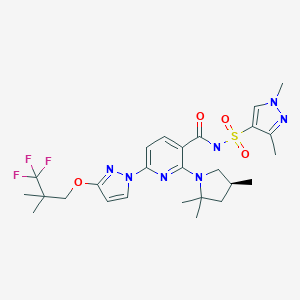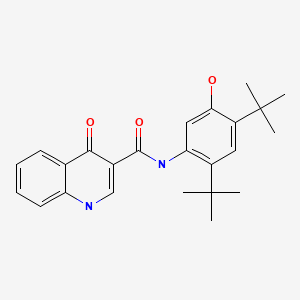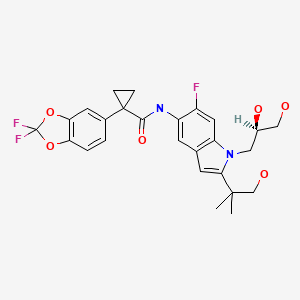Attribution Statement: LactMed is a registered trademark of the U.S. Department of Health and Human Services.
NCBI Bookshelf. A service of the National Library of Medicine, National Institutes of Health.
Drugs and Lactation Database (LactMed®) [Internet]. Bethesda (MD): National Institute of Child Health and Human Development; 2006-.
CASRN: 2216712-66-0; 873054-44-5; 1152311-62-0



Drug Levels and Effects
Summary of Use during Lactation
Information from one maternal-infant pair with ivacaftor and lumacaftor and two pairs with elexacaftor, ivacaftor and tezacaftor indicates that the drugs have low levels in milk and infant serum. An international survey of cystic fibrosis centers found no adverse effects in 26 breastfed infants of mothers taking the elexacaftor, tezacaftor and ivacaftor combination. A task force respiratory experts from Europe, Australia and New Zealand found that these drugs are probably safe during breastfeeding.[1] One breastfed infant had transient elevations in bilirubin and liver enzymes during maternal therapy that could not definitively be attributed to the drugs in breastmilk. Until more data are available, monitoring of infant bilirubin and liver enzymes might be advisable during breastfeeding with maternal elexacaftor, lumacaftor and ivacaftor therapy.[2] Congenital cataracts in breastfed infants has been reported in the infants of mothers who took the drugs during pregnancy. Examination of breastfed infants for cataracts has been recommended.[3] Anecdotal evidence indicates that the drugs in breastmilk may moderate cystic fibrosis in breastfed infants.
Drug Levels
Maternal Levels. A woman with cystic fibrosis was treated with lumacaftor and ivacaftor during pregnancy and postpartum. The dosage was not stated, but it was probably the standard dosage of lumacaftor 400 mg and ivacaftor 250 mg orally every 12 hours. The average concentration of ivacaftor in breastmilk samples taken randomly over a 6-month period without regard to the times of the doses was 35.3 mcg/L (0.09 micromolar).[4]
Two nursing mothers with cystic fibrosis who were taking elexacaftor, ivacaftor and tezacaftor, had their milk samples analyzed 2 or 3 times between 15 and 60 days postpartum. Milk levels were all <1 micromolar in one woman at 15 and 60 days postpartum. The other woman had milk levels of the 3 drugs <1 micromolar at 30 days postpartum, milk ivacaftor and tezacaftor levels of <1 micromolar and elexacaftor level of about 1 micromolar at 45 days postpartum. Milk levels of all drugs tended to increase slightly over time.[5]
Two nursing mothers with cystic fibrosis were taking elexacaftor, ivacaftor and tezacaftor in unspecified dosages. The concentrations in milk at unreported times after a dose were ivacaftor 0.03 micromolar (11.8 mcg/L) and 0.26 micromolar (102 mcg/L); tezacaftor levels were 0.12 micromolar (62.5 mcg/L) and 0.39 micromolar (203 mcg/L); and elexacaftor levels were 0.74 micromolar (442 mcg/L) and 1.29 micromolar (771 mcg/L).[6]
A woman with cystic fibrosis received elexacaftor 100 mg, tezacaftor, 50 mg, ivacaftor 75 mg and additional ivacaftor 150 mg daily while exclusively breastfeeding her 3-month-old infant. Fasting breastmilk samples were collected 12 hours after the last dose of ivacaftor 150 mg and before the morning dose of elexacaftor, tezacaftor, and ivacaftor. Concentrations in milk were elexacaftor 1049 mcg/L, tezacaftor 761 mcg/L and ivacaftor 1795 mcg/L.[7]
Infant Levels. An infant was breastfed by a mother taking lumacaftor and ivacaftor. The percentage of breastfeeding varied between 25% and 100% during this time period. The average infant ivacaftor plasma concentration over the first 6 months of life, excluding day 1 postpartum, was 3.9 mcg/L (0.01 micromolar). This value corresponded to average of 0.5% of simultaneous maternal plasma levels.[4]
Two partially breastfed (extent not stated) infants whose mothers were taking elexacaftor, ivacaftor and tezacaftor had serum drug concentrations measured several times. Tezacaftor levels were highest of the 3 drugs, starting at about 1 micromolar at birth. Levels remained similar in one infant up to 100 days of age and dropped below 1 micromolar at 45 and 60 days postpartum. The levels of the other two drugs dropped to 0.1 micromolar and lower over time.[5]
A woman with cystic fibrosis received elexacaftor 100 mg, tezacaftor, 50 mg, ivacaftor 75 mg and additional ivacaftor 150 mg daily while exclusively breastfeeding her 3-month-old infant. An infant blood sample was collected 12 hours after the last dose of ivacaftor 150 mg and before the morning dose of elexacaftor, tezacaftor, and ivacaftor. The infant was not breastfed 2 hours prior to blood collection. Infant plasma concentrations were elexacaftor 4.7 mcg/L, tezacaftor 13.9 mcg/L and ivacaftor 23.9 mcg/L.[7]
Effects in Breastfed Infants
A woman with cystic fibrosis was treated with lumacaftor and ivacaftor during pregnancy and postpartum. Her infant was fully breastfed until day 29 postpartum when elevated direct and indirect bilirubin, aspartate aminotransferase (AST), and alkaline phosphatase were found to be elevated. All values had been normal on days 1 and 14. The fraction of breastmilk the infant received was reduced to 25% and all values were normal on day 37. The fraction of breastfeeding was increased to 50% and then to 100%. On day 135, the infant's direct bilirubin was elevated during concurrent maternal levofloxacin and trimethoprim-sulfamethoxazole therapy. The fraction of breastfeeding was decreased to 75% and the direct bilirubin was normal on day 154. The authors noted that the abnormal test results could not definitively be attributed to lumacaftor and ivacaftor therapy.[4]
A survey was sent to lead clinicians of adult CF centers in Europe, the United Kingdom, United States of America, Australia and Israel requesting anonymized data on pregnancy outcomes in women using CFTR modulators during pregnancy and lactation. Responses were received from 31 centers and one woman with CF for a total of 64 pregnancies in 61 women resulting in 60 live births. Thirteen infants were breastfed on ivacaftor alone, 9 infants were breastfed on lumacaftor and ivacaftor, and 5 infants were breastfed on tezacaftor and ivacaftor for a total of 27 infants exposed to ivacaftor in breastmilk, all with no reported complications. The extent of breastfeeding was not reported.[8] An updated survey by the same authors asked CF clinicians to report on pregnant women exposed to the elexacaftor, tezacaftor and ivacaftor combination during pregnancy and breastfeeding. Twenty-six infants were breastfed (extent not stated) during maternal use of the combination. No adverse effects were reported in the breastfed infants.[9]
An infant was born to a mother taking elexacaftor, ivacaftor and tezacaftor for cystic fibrosis. The infant was breastfed (extent not stated). Although the infant had cystic fibrosis-causing CFTR mutations, the infant was healthy and tested negative for cystic fibrosis on newborn screening. The authors expressed concern that the drugs received transplacentally and in breastmilk caused a false negative screening test.[10]
A mother who was a heterozygous carrier of the F508del gene became pregnant with a homozygous infant. At 32 weeks of pregnancy, the mother began elexacaftor, ivacaftor and tezacaftor in the usual adult dosage to treat her fetus who had evidence of meconium ileus. The infant was born at 36 weeks and given pancreatic enzyme replacement therapy with breastfeeding while maternal treatment continued. The infant’s fecal elastase, transaminases and bilirubin were normal at about 1 month of age. The infant’s sweat chloride, although low, was nearer to normal than was expected. The authors hypothesized that the medications received in breastmilk moderated the disease process in the infant.[11]
Three women with cystic fibrosis were taking elexacaftor, ivacaftor and tezacaftor in unspecified dosages during pregnancy and postpartum while breastfeeding. On routine visual examinations between 8 days and 6 months postpartum, their infants were found to have small ( < 1.0 mm) bilateral cataracts, in the central area in one and outside the visual axis in the other two. Breastfeeding was discontinued after diagnosis at 16 days, 9 weeks and 6 months postpartum. The contribution of breastfeeding to the cataracts could not be determined.[6]
Two women were reported by the British Columbia cystic fibrosis clinic who became pregnant and breastfed their infants. One took ivacaftor and breastfed (extent not stated) for 42 months. Her infant was physically normal and healthy, but had speech delay. The other woman took Tricafta (ivacaftor, elexacaftor, and tezacaftor). She breastfed (extent not stated) her infant for 6 months and her infant had no complications.[12]
A woman with cystic fibrosis took ivacaftor 150 mg, tezacaftor 100 mg and elexacaftor 200 mg in the morning and ivacaftor 150 mg at night during pregnancy and breastfeeding (extent not stated). The infant had not regained his birthweight at 10 days postpartum, his stools had a greasy rim and he had pancreatic elastase levels below levels for pancreatic sufficiency but higher than usually expected for newborns homozygous for this mutation. The infant was started on pancreatic enzymes and by day 20, he had normal elastase levels. By day 45 of life was gaining weight and stools were normal. At 6 months of age the infant was still being breastfed and doing well. The authors felt that when breastfeeding is stopped, a rebound in symptoms might occur because the infant will no longer be receiving small amounts of the mother’s medications through milk.[13]
A woman with cystic fibrosis received elexacaftor 100 mg, tezacaftor, 50 mg, ivacaftor 75 mg and additional ivacaftor 150 mg daily from 12 weeks of pregnancy and postpartum. The mother exclusively breastfed her infant while continuing therapy, and no significant side effects related were observed in the infant up to at least 3 months of age.[7]
Effects on Lactation and Breastmilk
Relevant published information was not found as of the revision date.
References
- 1.
- Middleton PG, Gade EJ, Aguilera C, et al. ERS/TSANZ Task Force Statement on the management of reproduction and pregnancy in women with airways diseases. Eur Respir J 2020;55:1901208. [PubMed: 31699837]
- 2.
- Jain R, Taylor-Cousar JL. Fertility, pregnancy and lactation considerations for women with CF in the CFTR modulator era. J Pers Med 2021;11:418. [PMC free article: PMC8156060] [PubMed: 34063507]
- 3.
- Taylor-Cousar JL. CFTR modulators: Impact on fertility, pregnancy, and lactation in women with cystic fibrosis. J Clin Med 2020;9:2706. [PMC free article: PMC7563981] [PubMed: 32825766]
- 4.
- Trimble A, McKinzie C, Terrell M, et al. Measured fetal and neonatal exposure to lumacaftor and ivacaftor during pregnancy and while breastfeeding. J Cyst Fibros 2018;17:779-82. [PMC free article: PMC6354249] [PubMed: 29866531]
- 5.
- Collins B, Fortner C, Cotey A, et al. Drug exposure to infants born to mothers taking elexacaftor, tezacaftor, and ivacaftor. J Cyst Fibros 2022;21:725-7. [PMC free article: PMC9213569] [PubMed: 34952795]
- 6.
- Jain R, Wolf A, Molad M, et al. Congenital bilateral cataracts in newborns exposed to elexacaftor-tezacaftor-ivacaftor in utero and while breast feeding. J Cyst Fibros 2022;21:1074-6. [PubMed: 36266182]
- 7.
- Ripani P, Mucci M, Pantano S, et al. Maternal, newborn and breast milk concentrations of elexacaftor/tezacaftor/ivacaftor in a F508del heterozygous woman with cystic fibrosis following successful pregnancy. Front Med (Lausanne) 2023;10:1274303. [PMC free article: PMC10734635] [PubMed: 38131041]
- 8.
- Nash EF, Middleton PG, Taylor-Cousar JL. Outcomes of pregnancy in women with cystic fibrosis (CF) taking CFTR modulators - an international survey. J Cyst Fibros 2020;19:521-6. [PubMed: 32151568]
- 9.
- Taylor-Cousar JL, Jain R. Maternal and fetal outcomes following elexacaftor-tezacaftor-ivacaftor use during pregnancy and lactation. J Cyst Fibros 2021;20:402-6. [PubMed: 33762125]
- 10.
- Fortner CN, Seguin JM, Kay DM. Normal pancreatic function and false-negative CF newborn screen in a child born to a mother taking CFTR modulator therapy during pregnancy. J Cyst Fibros 2021;20:835-6. [PubMed: 33846105]
- 11.
- Szentpetery S, Foil K, Hendrix S, et al. A case report of CFTR modulator administration via carrier mother to treat meconium ileus in a F508del homozygous fetus. J Cyst Fibros 2022;21:721-4. [PubMed: 35422395]
- 12.
- Goodwin J, Quon BS, Wilcox PG. Experience to date with CFTR modulators during pregnancy and breastfeeding in the British Columbia Cystic Fibrosis clinic. Respir Med Case Rep 2022;40:101778. [PMC free article: PMC9649942] [PubMed: 36386290]
- 13.
- Gómez-Montes E, Salcedo Lobato E, Galindo Izquierdo A, et al. Prenatal cystic fibrosis transmembrane conductance regulator modulator therapy: A promising way to change the impact of cystic fibrosis. Fetal Diagn Ther 2023;50:136-42. [PubMed: 36996799]
Substance Identification
Substance Name
Elexacaftor, Tezacaftor and Ivacaftor
CAS Registry Number
2216712-66-0; 873054-44-5; 1152311-62-0
Drug Class
Breast Feeding
Milk, Human
Chloride Channel Agonists
Cystic Fibrosis Transmembrane Conductance Regulator Protein Modulator
CFTR Protein Modulator
Disclaimer: Information presented in this database is not meant as a substitute for professional judgment. You should consult your healthcare provider for breastfeeding advice related to your particular situation. The U.S. government does not warrant or assume any liability or responsibility for the accuracy or completeness of the information on this Site.
- User and Medical Advice Disclaimer
- Drugs and Lactation Database (LactMed) - Record Format
- LactMed - Database Creation and Peer Review Process
- Fact Sheet. Drugs and Lactation Database (LactMed)
- Drugs and Lactation Database (LactMed) - Glossary
- LactMed Selected References
- Drugs and Lactation Database (LactMed) - About Dietary Supplements
- Breastfeeding Links
- PMCPubMed Central citations
- PubChem SubstanceRelated PubChem Substances
- PubMedLinks to PubMed
- Review Tezacaftor and Ivacaftor.[Drugs and Lactation Database (...]Review Tezacaftor and Ivacaftor.. Drugs and Lactation Database (LactMed®). 2006
- Review Lumacaftor and Ivacaftor.[Drugs and Lactation Database (...]Review Lumacaftor and Ivacaftor.. Drugs and Lactation Database (LactMed®). 2006
- Review Ivacaftor.[Drugs and Lactation Database (...]Review Ivacaftor.. Drugs and Lactation Database (LactMed®). 2006
- Review Corrector therapies (with or without potentiators) for people with cystic fibrosis with class II CFTR gene variants (most commonly F508del).[Cochrane Database Syst Rev. 2023]Review Corrector therapies (with or without potentiators) for people with cystic fibrosis with class II CFTR gene variants (most commonly F508del).Heneghan M, Southern KW, Murphy J, Sinha IP, Nevitt SJ. Cochrane Database Syst Rev. 2023 Nov 20; 11(11):CD010966. Epub 2023 Nov 20.
- Corrector therapies (with or without potentiators) for people with cystic fibrosis with class II CFTR gene variants (most commonly F508del).[Cochrane Database Syst Rev. 2020]Corrector therapies (with or without potentiators) for people with cystic fibrosis with class II CFTR gene variants (most commonly F508del).Southern KW, Murphy J, Sinha IP, Nevitt SJ. Cochrane Database Syst Rev. 2020 Dec 17; 12(12):CD010966. Epub 2020 Dec 17.
- Elexacaftor, Tezacaftor and Ivacaftor - Drugs and Lactation Database (LactMed®)Elexacaftor, Tezacaftor and Ivacaftor - Drugs and Lactation Database (LactMed®)
Your browsing activity is empty.
Activity recording is turned off.
See more...
